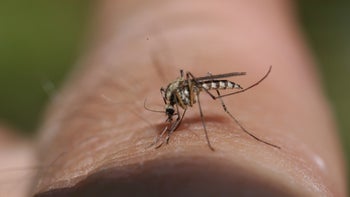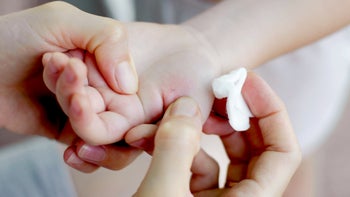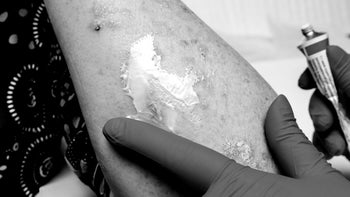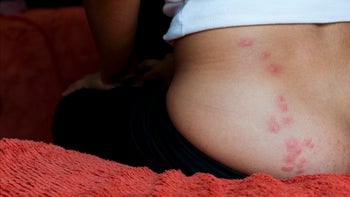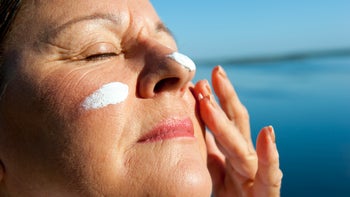
Can Fleas Bite People? Yes. Here’s What Flea Bites Look Like on Humans (With Pictures)
Key takeaways:
Fleas aren’t just a problem for pets: They can bite humans too. Knowing what flea bites on humans look like can help you tell them apart from other bug bites.
Flea bites are small, itchy bumps that usually occur in clusters on the ankles and lower legs.
Most flea bites don’t need treatment. Over-the-counter hydrocortisone cream, calamine lotion, and ice packs can help soothe the itch.
Getting rid of a flea infestation can take months. You’ll need to treat your pets and your house at the same time.
Table of contents

Your cat or dog may come to mind when you think about fleas. But fleas don’t just affect pets: They can bite humans too. While these tiny blood-sucking parasites prefer to hide in the fur of animals, they can also feed on human blood.
Flea bites cause an itchy rash. And it can be very challenging and time consuming to remove them from your home. We’ve got you covered with what to look for and, most importantly, how to get rid of fleas for good.
Do fleas bite humans?
Yes, fleas can bite through human and animal skin to feed on blood. A flea bite looks like a small bump that’s red, brown, or skin-colored. This itchy bump is similar to those you get with other bug bites.
Search and compare options
Fleas are tiny, wingless parasites. They’re reddish-brown in color and have three pairs of legs. They’re smaller than 4 mm (about the size of a pinhead). This makes them hard to see. Their strong back legs help them to jump more than 100 times their length.
There are over 2,500 types of fleas in the world. The cat flea, dog flea, and human flea are the most common to bite humans. Fleas live around grassy areas, trees, and shrubs. They have strong legs, which let them hop onto you (or your pet) when you walk through their habitat. Then, without knowing it, you may bring a flea into your home. Fleas can then set up shop in your furniture, bed, or carpet.
What are common risks of flea bites?
Flea bites can be itchy and bothersome, but they’re pretty low risk overall.
Like with any bite, avoid scratching, as this can cause further irritation and even lead to infection. Some people may also have an allergic reaction to a flea bite. Get help right away if you have:
Trouble breathing
Swelling on your face, tongue or lips
Chest pain
What diseases do fleas carry?
While the risk of severe complications from flea bites is small, fleas can carry pathogens (like a bacteria or virus) that can infect humans, like:
Is it a mosquito or bedbug bite? This visual guide with pictures will help you tell the difference between these two common insect bites.
Worried about bedbugs? See what bedbug bites look like (with pictures) and what clues to look for around your house.
All about flea prevention: From flea collars to pills to creams, see what the best flea prevention options are for your pet.
What do flea bites look and feel like?
Flea bites can be intensely itchy. But how can you tell the difference between a flea bite and another bug bite? Here are some other clues to look for:
Bites that occur in lines or clusters
Bites that may have a pale or discolored ring around them
Small blisters at the site of the bites
Scratch marks
Signs of skin infection (crusts, surrounding redness, or drainage)
Most flea bites heal within a week. In darker skin tones, flea bites can leave dark marks (called hyperpigmentation) that can take months to fade.
Read more like this
Explore these related articles, suggested for readers like you.
Pictures of flea bites on humans
Fleas can bite anywhere on the body. But they’re common around the ankles and lower legs. That’s because they jump from the ground, up onto the skin.
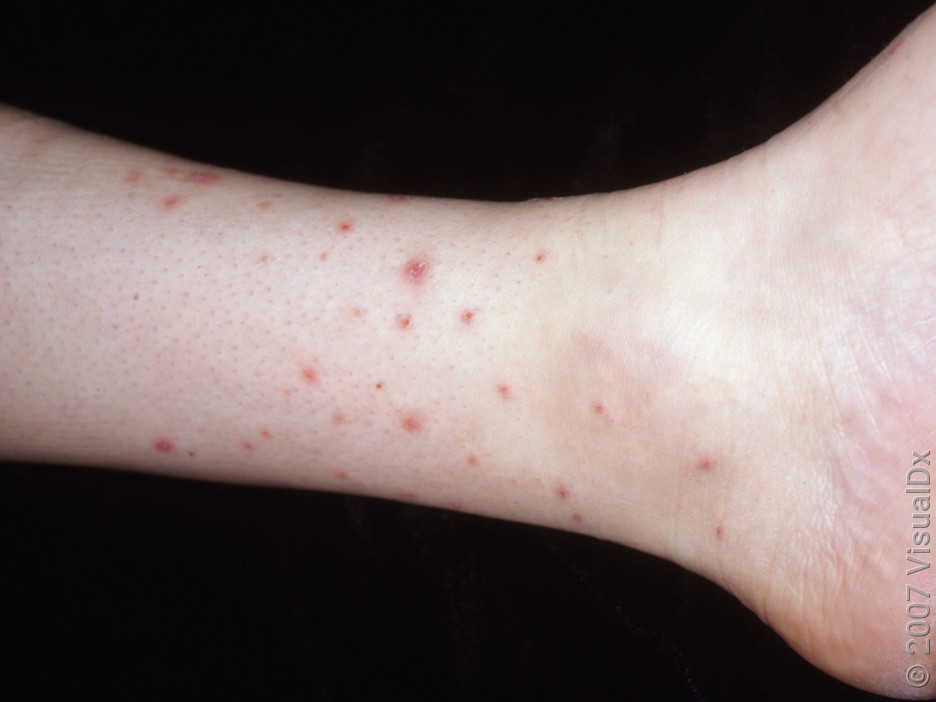
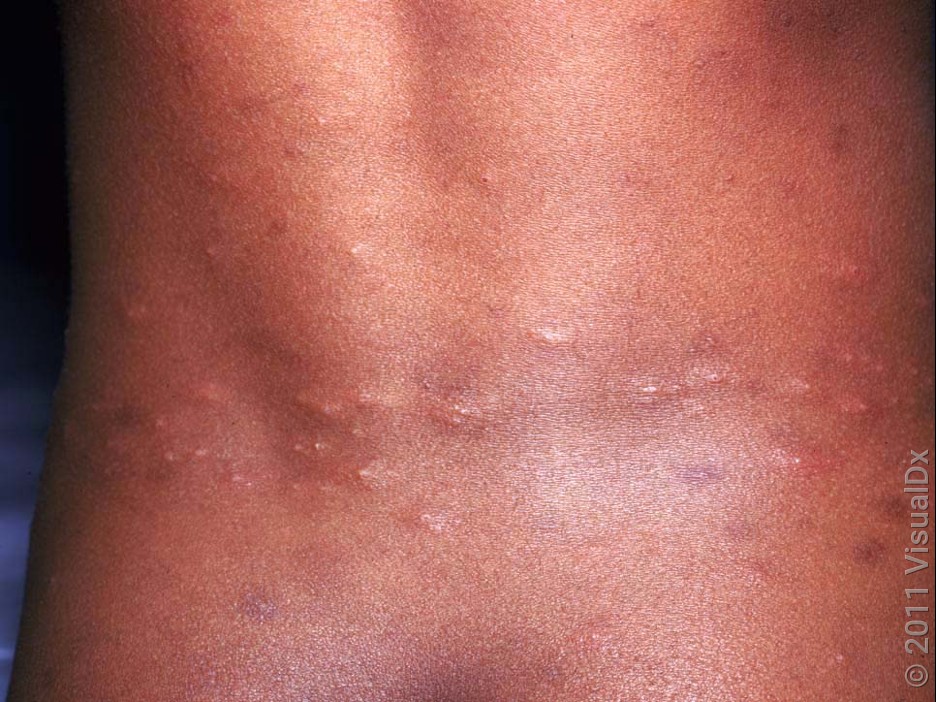

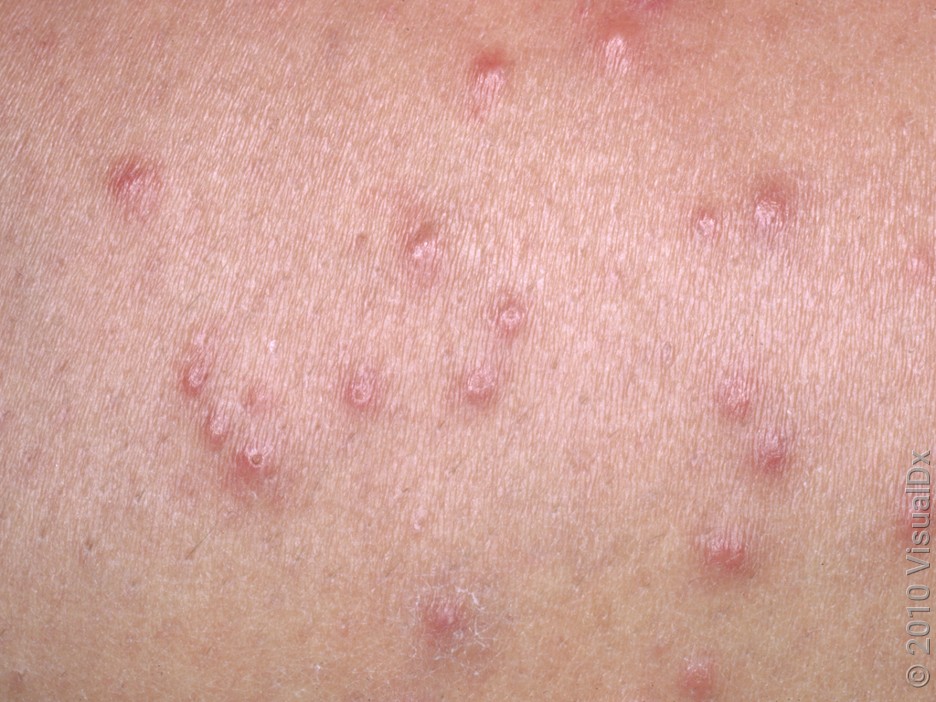
How are flea bites diagnosed?
Flea bites are usually pretty easy to diagnose, based on their appearance and location. Unlike other bug bites, flea bites are usually smaller. And they form lines or clusters around the ankles and lower legs. People with flea bites also often have pets with fleas (or have been around them).
How do you treat flea bites?
Most flea bites only last a few days and don’t need treatment. To lower your risk of a skin infection, avoid scratching them as much as possible.
These over-the-counter (OTC) and home treatments can help soothe the itching from flea bites while they heal:
1% hydrocortisone cream or ointment
Calamine lotion
Creams or lotions with menthol
An ice pack wrapped in a towel
Aloe vera gel
Antihistamine pills
If the itch doesn’t improve with these treatments, your primary care provider can recommend a stronger prescription steroid cream.
Keep in mind that treating flea bites doesn’t get rid of the fleas themselves. If you don’t get rid of the flea infestation, you’ll continue to get flea bites.
How do you get rid of fleas?
Fleas can be tough to get rid of, and it may require several rounds of treatment to eliminate them completely.
You’ll need to treat your home and your pet(s) at the same time in order to successfully disrupt the fleas’ life cycles. Repeat the process at least twice, every 5 to 10 days, to get rid of all stages of the life cycle.
Here’s what to do:
In your home, thoroughly wash and vacuum flea-infested areas, like carpets, rugs, and bedding.
You’ll also need to wash every pet in the home. Use soap and water and then comb your pets with a flea comb.
Once the fleas have been eliminated, your vet can help you find the best flea-prevention treatment for your pet to prevent this from happening again.
Frequently asked questions
Mosquitos can also cause itchy bites that may be mistaken for flea bites. But there are some key differences to help tell them apart:
Flea bites are small, form lines or clusters, and usually affect the ankles and legs. They can bite any time of day or year. And you can get bites after being in a flea-infested home.
Mosquito bites are larger, usually solitary, and can affect any skin that’s not covered in clothing. They’re also most likely to bite at dawn and dusk, between late spring and early fall.
In general, bedbug bites are bigger than flea bites. They also usually bite at night on skin that’s not covered in clothing, like your arms, shoulders, and neck. If you have bug bites, there are also usually other signs of bedbugs in your home, like bedbugs in the mattress seams or red-colored stains on your sheets.
Yes, adult fleas can live in mattresses for up to 2 months without feeding. If they have a food source nearby — like a cat or dog — they can live up to 7 or 8 months.
To get rid of fleas in your mattress, vacuum it thoroughly and then steam clean it to kill adults, eggs, and larvae. It’s also important to wash your sheets and bedding and treat your pets at the same time.
The bottom line
Fleas aren’t just a problem for pets. They can also bite humans and cause an itchy rash. Flea bites usually appear as a line or cluster of small, itchy bumps on the ankles and lower legs. They usually only last a few days, but the itch can be intense. OTC creams like hydrocortisone and calamine lotion, antihistamines, and ice packs can all help soothe the itch from flea bites. To treat a flea infestation, you’ll need to treat your pets and your home at the same time, 2 or 3 times. This may take some time (and a lot of patience). Flea prevention medication for your pets is the best way to prevent flea infestations in the future.
Why trust our experts?



Images used with permission from VisualDx (www.visualdx.com).
References
American Academy of Dermatology Association. (n.d.). Bug bites and stings: When to see a dermatologist.
Anderson, J., et al. (2024). Flea bites. StatPearls.
Centers for Disease Control and Prevention. (2024). About fleas.
Centers for Disease Control and Prevention. (2025). About murine typhus.
Centers for Disease Control and Prevention. (2024). Getting rid of fleas.
Murray, K. (2015). School pest solutions. Maine Department of Agriculture, Conservation and Forestry.






